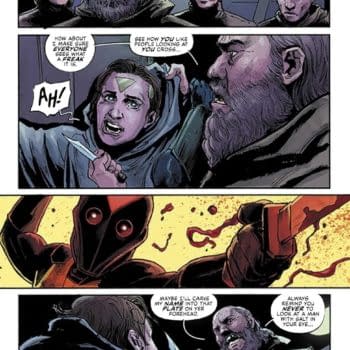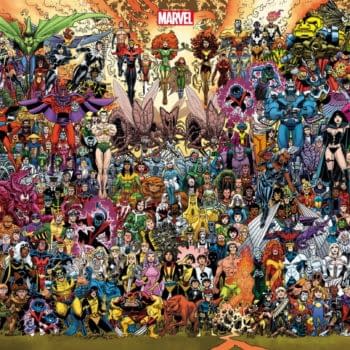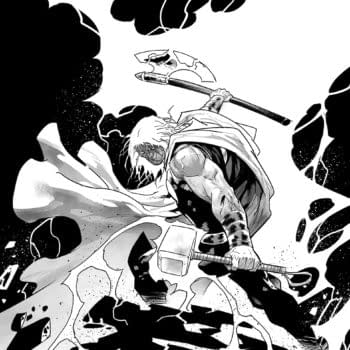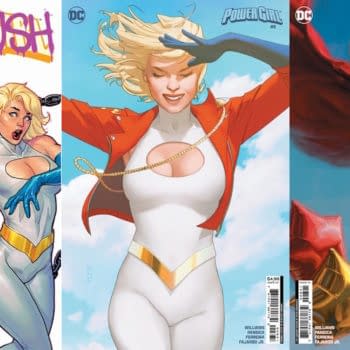Posted in: Recent Updates | Tagged: dennis o'neil, denny o'neil, denny o'neill, how to write comics and graphic novels, How to write comics and graphic novels by Dennis O'Neil, university
How To Write Comics And Graphic Novels by Dennis O'Neil #5 – Network King

This week, we're lowering our foreheads and eschewing discussions of aesthetics and craft to blather a bit about selling the damn stuff. Sorry to disillusion he more tender-minded among you, but writing for a large audience–doing any creative thing for a large audience–is always going to be somewhat about money, and those who have it, and convincing them that you are The Man or The Woman. (Remember: while he was painting the big ceiling, Michelangelo had to deal with Pope Julius II, not his favorite person, who owned the ceiling and probably paid for the paints.)
A quick digression: Yeah, I hate this too. I'm not good at self-promotion, small talk, networking, building a fan base… any of that. If I were a beginner today, that might be a serious problem for me. But if I were a professional, I'd have to either find a way to get it done or con someone into doing it for me.
End of digression and on to the subject of springboards. I don't think I can do better than to quote my old friend, colleague, once and perhaps future co-teacher, Danny Fingeroth, who currently conducts a class titled How to Write Comics and Graphic Novels at The Museum of Comic and Cartoon Art in New York City. (And if you hurry, you can still register for the current sessions.) Danny?
A springboard is a short–no more than 1/4 or 1/3 of a page–summary of your story, designed to give the key story points and what the story is thematically about. It's designed to sell your story to an editor (not a consumer), so therefore you must give away the story's secrets and twists. You must do this as intriguingly and entertainingly–and as briefly–as possible.
This odd entity, this mini-story, is what you present to an editor when you want to convince him (her) that you are capable of delivering work that will please readers. In days of yore, and perhaps in certain instances now, a springboard wasn't always necessary. Once the writer had established a relationship with an editor, a conversation would suffice. And in days even further yore (yoreier?) what we're calling a "springboard" would have been virtually indistinguishable from a plot, provided the writer was working in the method established by Stan Lee at the fledgling Marvel Comics. In this approach, the writer did a plot, which was given to a penciller, who rendered the visual narrative onto art board. The art board (later, photocopies of it) was given to the writer, who then wrote appropriate dialogue and captions and, usually, took the process a step further and drew the balloons and caption boxes onto the artwork with non-photographable le blue pencil. (Once photocopies became the norm–this will not astonish you–our writer drew balloons and boxes onto the copies using…I dunno–pointed stick dipped in mud? Whatever.)
That was then, and then is not now. I'm told that Stan's method isn't much used these days, and if it is, I'd bet that what's given to the artist is a lot more than a springboard. The last time I worked like this–and remember, I'm a lazy sod not given to unnecessary labor–my plot (for a Daredevil story) exceeded a page. When I edited Doug Moench, he'd send me plots that might run 25 pages for a 22-page story. (Doug is emphatically not a lazy sod.) We might remember that when Stan was enmeshed in creating Marvel, collaborated with guys like Jack Kirby and Steve Ditko, who really understood visual narrative. Maybe someone less experienced should move further along the learning curve before adopting the so-called "Marvel style."
At the end of the day, there ain't no right and/or wrong in these matters. There's what works here and now, in these circumstances, and what doesn't.
Dennis O'Neil teaches a ten week course on Writing Comics And Graphic Novels at the New York University. Classes are every Wednesday evening from 6.45pm to 9pm. For further information, please call NYU's School of Professional and Continuing Studies at Studies at 212 9987200











